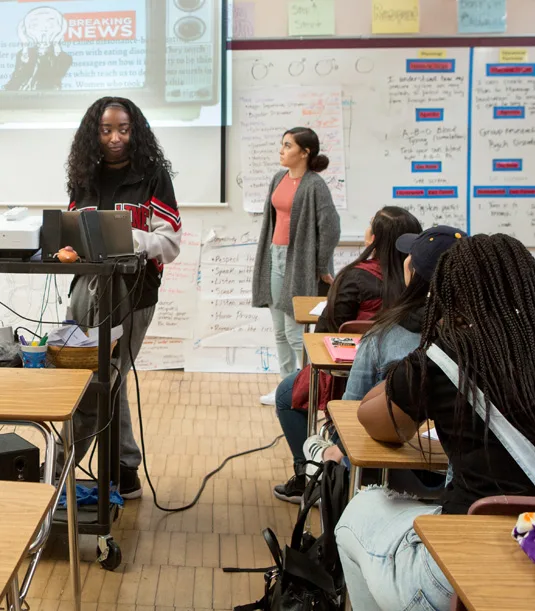Building a Concurrent Enrollment Teacher Pipeline: Opportunities, Challenges, and Lessons
Addressing One of the Biggest Barriers to Equitable Dual Enrollment Growth
March, 2022
Across the nation, states are expanding college in high school programs like dual enrollment and concurrent enrollment to give students a stronger start on college and career success. But one challenge continues to limit equitable access: a shortage of qualified high school teachers who meet college faculty credentialing requirements.
Building a Concurrent Enrollment Teacher Pipeline: Opportunities, Challenges, and Lessons from CHSA, Zinth Consulting LLC, the National Alliance of Concurrent Enrollment Partnerships (NACEP), and the Midwestern Higher Education Compact (MHEC) explores how states, higher education institutions, and K–12 systems can work together to address this shortage — and ensure that every student, in every community, has access to high-quality concurrent enrollment courses.
Why the Teacher Pipeline Matters
Concurrent enrollment allows high school instructors, approved by a college or university, to teach college-credit courses within their high school. These programs expand access and convenience for students, particularly in rural and under-resourced districts.
However, credentialing requirements — such as the master’s degree and graduate-credit expectations set by accreditors and higher education institutions — often make it difficult for teachers to qualify. This barrier has become a top concern for states, as the demand for dual enrollment continues to grow faster than the supply of qualified instructors.
What’s Inside the Report
Drawing from a national scan of state initiatives and interviews with leaders in 16 states, this report identifies the most promising strategies to build and sustain a strong concurrent enrollment teacher pipeline.
Key Opportunities
-
State Funding Incentives – Grants, scholarships, and tuition assistance programs to help teachers complete required graduate coursework.
-
Regional Partnerships – Collaborations between colleges and K–12 districts to align credentialing, provide mentorship, and share faculty resources.
-
Flexible Credentialing Pathways – New models that maintain academic rigor while recognizing teacher experience and prior learning.
-
Grow-Your-Own Initiatives – Programs that recruit and support future educators with a focus on equity and local workforce needs.
Common Challenges
-
Limited funding and institutional capacity to support teacher credentialing.
-
Misalignment between K–12 and higher education systems around faculty qualifications.
-
Equity gaps in access to professional development and graduate coursework for teachers in rural and high-poverty schools.
Lessons for States
The report outlines five key lessons for state policymakers and education leaders:
-
Prioritize the teacher pipeline as a statewide equity issue.
-
Provide sustainable funding for teacher graduate coursework.
-
Build cross-sector partnerships to share faculty and professional development capacity.
-
Align state policy, accreditation standards, and institutional expectations.
-
Collect and share data on instructor capacity and participation.
Why This Work Is Urgent
Without enough qualified instructors, students in rural, low-income, and majority-minority schools are less likely to access college in high school opportunities, exacerbating existing equity gaps.
By investing in the concurrent enrollment teacher pipeline, states can expand access, diversify the educator workforce, and ensure that every student benefits from rigorous, transferable, and equitable dual enrollment programs.
Who Should Read This Report
-
State education and higher education leaders
-
Teacher preparation programs and colleges of education
-
Dual and concurrent enrollment coordinators
-
District and school administrators focused on access and equity
Download the Report

Learn how your state can strengthen the educator workforce and expand equitable access to concurrent enrollment opportunities.
About the Authors
This paper was developed by Zinth Consulting LLC, the College in High School Alliance, National Alliance of Concurrent Enrollment Partnerships (NACEP), and the Midwestern Higher Education Compact (MHEC).


